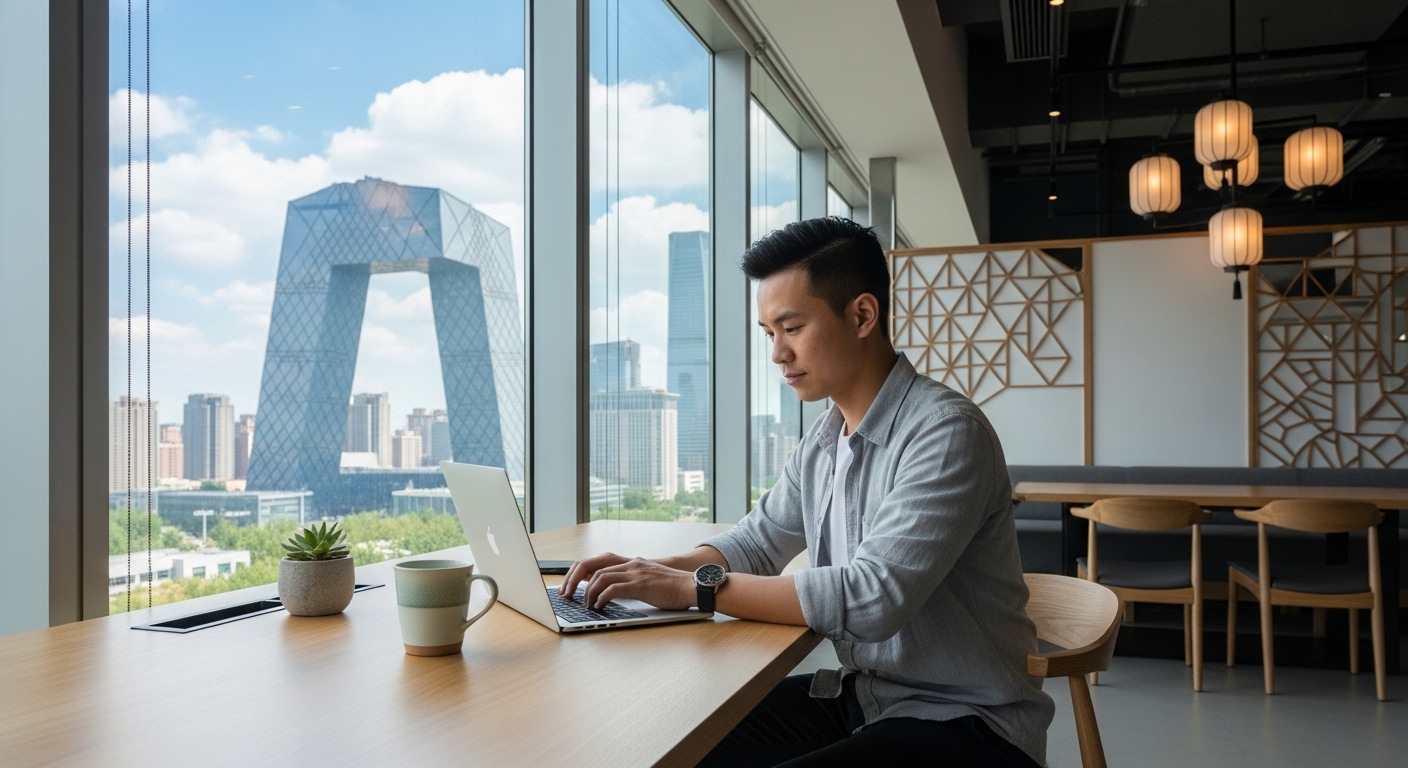Coworking spaces represent a modern paradox. They are vibrant hubs of collaboration and community, offering an escape from the isolation of home offices. Yet, this same dynamic energy can become a significant barrier to the very thing professionals need most: deep, uninterrupted focus. The constant buzz, the impromptu conversations, and the visual motion can easily derail your most important tasks. The solution isn’t to abandon these innovative environments, but to become an ‘attention architect’—a professional who intentionally designs their day, environment, and interactions for peak productivity. This approach transforms the coworking space from a potential field of distractions into a powerful asset. By strategically structuring your workspace, mastering your schedule, and leveraging the right tools, you can harness the collective energy of a shared office while carving out the necessary sanctuary for concentrated work. This guide will provide a practical blueprint for constructing your own high-focus workday, chapter by chapter, allowing you to thrive in the modern professional landscape.
Laying the foundation: choosing your workspace wisely
Before you can optimize your productivity, you must start with the raw materials of your environment. In a coworking space, not all desks are created equal, and your initial choice of location is the first and most critical architectural decision you’ll make. The right spot can foster focus, while the wrong one can guarantee a day of constant interruption. Begin by observing the natural flow of the space. Identify the high-traffic zones—typically near the entrance, coffee station, or restrooms—and consciously choose a desk further away. These areas are magnets for casual conversations and movement, which are fatal to deep work. Instead, seek out the quieter corners or designated ‘focus zones’ if your space offers them. Natural light is another crucial factor; studies have consistently shown its positive impact on mood, energy, and productivity. A desk near a window can be a significant advantage, reducing eye strain and connecting you to the natural rhythm of the day. Consider the direction you’ll be facing. For many, facing a wall can feel limiting but provides a powerful psychological barrier to visual distractions. Conversely, facing a high-traffic aisle means a constant stream of movement in your peripheral vision. If possible, take advantage of a trial day to test different spots at various times. Observe the morning rush, the midday lull, and the afternoon energy shift. This reconnaissance allows you to make an informed decision, selecting a home base that aligns with your work style and minimizes the need for daily adjustments.
Constructing your focus fortress: mastering your personal environment
Once you’ve chosen your strategic location, the next step is to fortify your personal workspace. This involves creating a micro-environment—a ‘focus fortress’—that signals to both your brain and those around you that you are engaged in deep work. The cornerstone of this fortress is a high-quality pair of noise-canceling headphones. They are the single most effective tool for dampening the ambient chatter and sudden noises that can shatter concentration. Even without music, the active noise cancellation creates a cone of silence, a powerful psychological cue for focus. Beyond audio, consider visual boundaries. A simple laptop privacy screen not only protects sensitive information but also narrows your field of vision, reducing the temptation to be distracted by movement in the periphery. The organization of your physical desk is also paramount. Adhere to a clean desk policy, keeping only the essentials for your current task within reach. A cluttered desk leads to a cluttered mind. Invest in simple ergonomic comforts, such as a laptop stand and an external keyboard and mouse, which can prevent physical discomfort from becoming a mental distraction. These elements work in concert to build a bubble of concentration. By taking control of your immediate sensory inputs, you are no longer a passive occupant of the space; you are an active architect of your own attention, capable of creating a state of flow even amidst the gentle hum of a busy office.
The blueprint of time: strategic scheduling and task batching
An architect wouldn’t build a structure without a blueprint, and a productive professional shouldn’t start their day without a plan. In a coworking environment, where external stimuli are abundant, structuring your time becomes non-negotiable. One of the most effective methods for this is time blocking, where you assign a specific task or type of work to every part of your day. Schedule your most demanding, high-concentration tasks—your ‘deep work’—for the times you know the office is quietest, such as early in the morning or later in the afternoon. Guard these blocks ruthlessly. For the work itself, the Pomodoro Technique is exceptionally well-suited for shared spaces. This method involves working in focused 25-minute sprints, followed by a 5-minute break. This structure helps maintain high levels of concentration and provides regular, guilt-free opportunities to stand up, stretch, or grab a coffee without derailing your entire workflow. Complement time blocking with task batching. Group similar, low-concentration activities together. For example, designate a specific 45-minute block to answer all your emails, return calls, and handle administrative tasks. This prevents these ‘shallow work’ items from peppering your day and interrupting your focus on more critical projects. By designing your schedule with this level of intention, you create a rhythm and a structure that insulates you from the unpredictability of the environment, ensuring that your most important work always gets the dedicated time it deserves.
Managing the social architecture: networking without derailing focus
The primary allure of a coworking space is its community. It’s a place for connection, collaboration, and serendipitous encounters that can spark new ideas or business opportunities. However, this social architecture can also be the biggest threat to your productivity. The key is to manage your social energy with the same intentionality you apply to your tasks. Instead of allowing for random interruptions, be proactive about scheduling your social interactions. Use your planned breaks, especially lunch or dedicated coffee runs, as your primary networking time. This allows you to fully engage with colleagues without the nagging feeling that you should be working. When you are in a deep work block, you must employ clear, non-verbal cues to signal your unavailability. Wearing headphones is the universal sign for “do not disturb.” Respect it in others, and people will learn to respect it in you. If someone does approach you while you’re in the zone, have a polite but firm script ready. Something as simple as, “It’s great to see you! I’m in the middle of something right now, but can I find you around lunchtime?” sets a boundary while preserving the relationship. It’s crucial to differentiate between productive collaboration and distracting chatter. If a conversation is genuinely work-related and valuable, consider moving it to a designated meeting room or breakout area to avoid disturbing others. By mastering this balance, you become a participant in the community on your own terms, reaping the benefits of connection without letting it sabotage your focus.
The digital toolkit: leveraging technology for enhanced concentration
While the physical environment presents its own set of challenges, our digital world is often an even greater source of distraction. As an attention architect, you must curate a digital toolkit specifically designed to protect and enhance your focus. Start with distraction-blocking software. Applications like Freedom, Cold Turkey, or SelfControl allow you to temporarily block access to time-wasting websites and social media platforms across all your devices. Scheduling a block for a 90-minute deep work session can be incredibly powerful, removing the temptation for digital procrastination entirely. Beyond blocking negatives, you should embrace positives. Utilize a robust task management application, such as Asana, Trello, or Todoist, to get tasks out of your head and into an organized system. This mental offloading frees up cognitive resources that would otherwise be spent trying to remember your to-do list, allowing you to fully concentrate on the task at hand. Your digital calendar is another critical tool. Use it not just for meetings, but to schedule your time blocks for deep work. Setting these as appointments with yourself gives them a tangible weight and makes you less likely to skip them. Finally, consider apps designed to improve focus through sound. Tools like Brain.fm or myNoise offer scientifically designed soundscapes, from binaural beats to ambient nature sounds, which can help mask distracting office noise and encourage a state of flow more effectively than music with lyrics. By thoughtfully selecting and implementing these digital tools, you build a powerful line of defense against both internal and external interruptions.
Building routines for resilience: the habits of a productive coworker
Ultimately, sustained productivity in a coworking space isn’t about one-off tricks; it’s about building resilient habits and routines that automate your focus. Your workday doesn’t start when you open your laptop; it begins with your pre-work ritual. Even if your commute is just a short walk, treat it as a psychological transition. Use this time to plan your top priorities for the day, disconnect from home life, and arrive at your desk with a clear sense of purpose. This simple habit frames your entire day for success. Similarly, create a clear “shutdown” ritual at the end of the day. This could involve tidying your desk, reviewing your accomplishments, and planning your top priorities for tomorrow. This practice provides a sense of closure, prevents work from bleeding into your personal time, and makes it easier to jump right back in the next morning. Throughout the day, structure your breaks with intention. It’s tempting to browse social media at your desk, but this doesn’t allow your brain to truly rest. Instead, physically leave your workspace. Take a short walk outside, stretch in a common area, or have a non-work-related chat with a colleague in the kitchen. These deliberate, restorative breaks are essential for maintaining high energy and concentration levels over the long term. These routines are the support structures of your productive day. They reduce decision fatigue, create consistency, and build the mental discipline required to consistently achieve deep work in a dynamic and stimulating environment.
In the end, thriving in a coworking space is not a matter of chance, but of design. By embracing the role of an ‘attention architect,’ you shift from being a passive recipient of your environment to its active creator. It’s a recognition that true productivity isn’t found in a perfectly silent, isolated room, but is built through a series of intentional choices. It begins with the foundational decision of where you sit and extends to the personal fortress you build with tools like noise-canceling headphones. It’s reinforced by the blueprint you create for your time, using strategies like time blocking and task batching to protect your most valuable cognitive resources. This architectural approach extends to managing your social energy, allowing you to engage with the community purposefully, and is supported by a carefully curated digital toolkit that shields you from online distractions. Most importantly, it is sustained by daily routines and resilient habits that make focus a default state, not a constant struggle. Coworking spaces offer immense potential for growth, connection, and inspiration. By applying these architectural principles, you can eliminate the trade-off between community and concentration, building a workday that is both deeply productive and richly connected.





